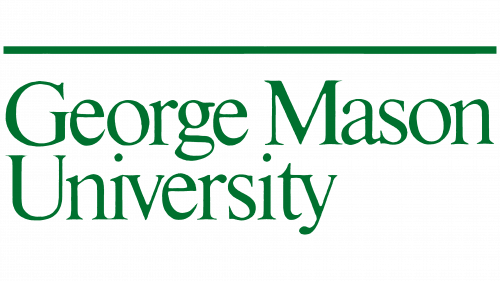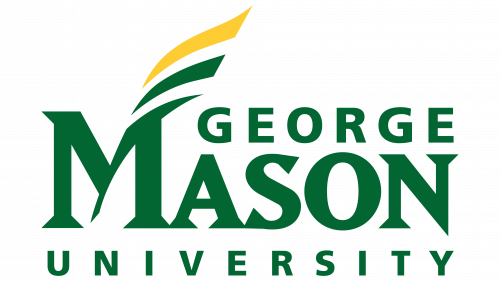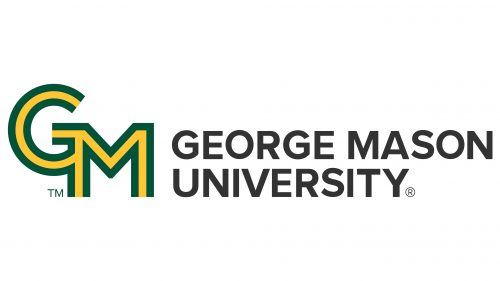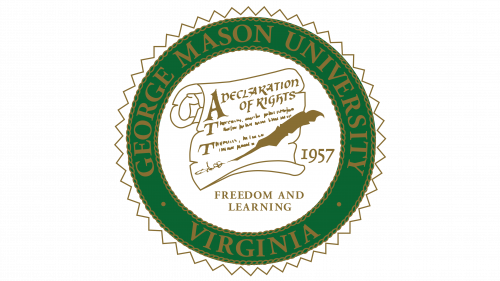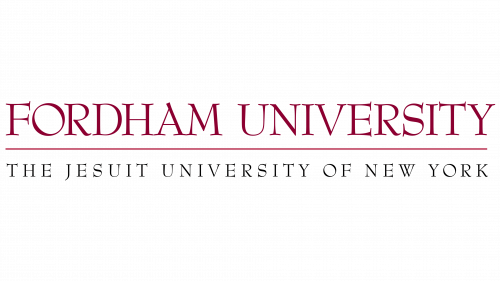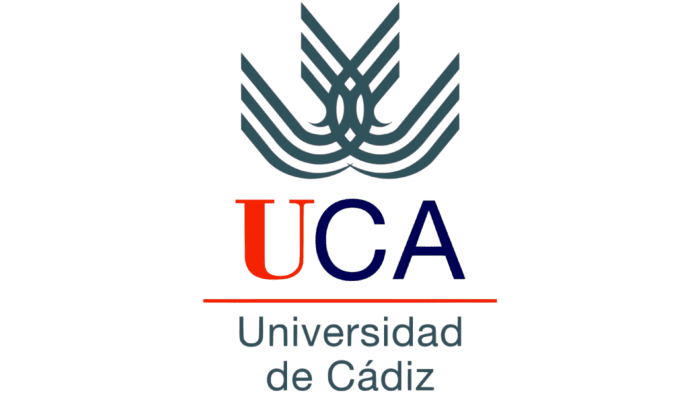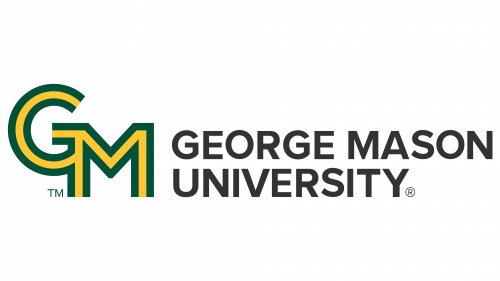 George Mason University Logo PNG
George Mason University Logo PNG
The George Mason University logo embodies freedom and education—key values at the core of the university’s learning experience. The emblem emphasizes the institution’s deep connection to America’s historical heritage, reflecting its role in shaping new generations focused on knowledge, freedom of thought, and respect for tradition.
George Mason University: Brand overview
The University of Virginia established a branch in Northern Virginia in 1949, marking the beginning of George Mason University’s history. Originally housed in an Arlington primary school, this division of the University—originally known as the Northern Virginia University Center—offered part-time courses.
The branch relocated to a new location near Bailey’s Crossroads in 1956, which allowed it to expand its educational offerings and student body. During this time, the institution changed its name to University College, a part of the University.
When the Virginia General Assembly approved legislation in 1959 to establish George Mason College of the University as a two-year institution, it marked a momentous turning point. The college’s name honors George Mason, one of the American Founding Fathers and the Virginia Bill of Rights writer.
The college moved to its present location in Fairfax in 1964, initially taking up 150 acres. This action was crucial to the institution’s growth since it increased the scope of its facilities and instructional offerings.
A historic day occurred in 1966 when George Mason College was authorized to award bachelor’s degrees. This greatly raised the college’s profile and increased student attraction by allowing it to offer four-year programs.
A significant turning point in the university’s history happened in 1972 when George Mason College separated from its parent institution to become George Mason University. This move allowed the university to decide on its research and teaching priorities, ushering in a new chapter in its history.
The years of the 1970s and 1980s saw George Mason University expand quickly. The School of Business was founded in 1977, the School of Law in 1979, and the School of Information Technology and Engineering in 1985 were among the various colleges and schools founded during this period. These developments greatly enhanced the institution’s reputation and academic offerings.
The university began establishing itself as a research school in 1979 when it opened its first doctoral program in psychology. The standing in scientific research was strengthened in the years that followed, with the addition of more PhD programs.
The institution gained notoriety in 1986 when James Buchanan, a professor of economics, was awarded the Nobel Prize in Economics. This occasion raised awareness of the economics department and considerably increased the university’s international stature.
The campus kept growing during the 1990s. When a campus in Prince William County was established in 1997, the institution was able to reach a larger audience and provide more students with educational opportunities.
The School of Public Policy opened in 2002 and was renamed in honor of Colin Powell, the former secretary of state of the United States.
The basketball team made history in 2005 when it advanced to the NCAA Final Four—a noteworthy accomplishment for a school founded only a few years earlier.
2009 was a significant milestone in the university’s scientific standing as it saw the establishment of the Krasnow Institute for Advanced Study, which specializes in multidisciplinary neuroscience research.
The institution continued growing throughout the 2010s, adding new programs and enhancing its research capacity. In 2012, the opening of the Institute for Conflict Analysis and Resolution reinforced its standing in conflict studies and resolution.
The late Justice Antonin Scalia of the United States Supreme Court was honored with the name of the School of Law in 2016, which brought more attention to the university’s legal program.
“Faster Farther,” an extensive fundraising drive that the institution started in 2017, aimed to raise $500 million to support several programs, including financing for research and scholarships for students.
The university’s sports teams now call EagleBank Arena home, and it serves as a venue for various events. The new multipurpose arena opened for business in 2018.
In response to the rising need for cybersecurity experts, the institution increased the scope of its cybersecurity programs in 2019 by introducing new courses and research initiatives.
The university swiftly responded to changing circumstances in 2020 by introducing hybrid class formats and increasing online learning options, which resulted in considerable modifications to the educational process.
The campus combined data analysis, artificial intelligence, and computer science research into a new institute called Digital Innovation, which opened its doors in 2021.
“Mason Virginia Promise,” a new strategic effort, was introduced in 2022 to boost Virginians’ access to higher education and the proportion of graduates in fields vital to the state’s economy.
In 2023, the institution improved its standing in innovation and entrepreneurship by growing its alliances with local tech firms and establishing a new incubator for student enterprises.
Additionally, the campus improved its research by obtaining more grant funds and publishing more scholarly articles in esteemed journals.
As part of its ongoing infrastructure development, the university plans to establish additional academic buildings and research facilities to accommodate the increasing number of students and rising academic programs.
The institution has always created new academic offerings and research avenues in response to the shifting demands of the job market and society. It has expanded from a modest outpost to a significant research hub, contributing significantly to Virginia’s and the nation’s scientific and educational world.
Meaning and History
What is George Mason University?
Located in Fairfax, Virginia, the institute is a public research institution with campuses in Arlington and Prince William counties. It offers undergraduate and graduate programs in various fields, including business, law, engineering, social sciences, and the arts. It is the largest public university in Virginia. The university is known for its diverse student body and excellent academic programs. It is also lauded for its contributions to economics, public policy, and conflict resolution through its research projects. The university is known for its competitive athletic programs, active student body, and vibrant campus culture. The University offers students exceptional networking and internship opportunities in the public, non-profit, and for-profit sectors due to its proximity to Washington, DC.
Before 2004
For the university’s first emblem, a rich green color symbolized growth, development, and prosperity. The university’s name was placed beneath a straight line, written in thin, serifed capital letters in two levels. This emblem did not appear until after 1958 when the professional development center was transformed into a college and became part of the university. The line symbolized the institution’s dependent status, as it initially operated as a branch of the University of Virginia. It was only in 1972 that the college achieved independent university status.
The name George Mason, featured in the logo, belongs to a prominent Virginian and one of the United States’ Founding Fathers. He was the author of the Virginia Declaration of Rights, which became the foundation for the Bill of Rights. Mason is associated with progress, development, and enlightenment, making his name a significant element in the university’s title.
Green, the institution’s official color, is traditionally associated with nature and freshness. For the university, it symbolizes the ongoing pursuit of innovation, success, and prosperity.
2004 – 2024
2004, the George Mason University logo was updated, adopting a more progressive and modern look while maintaining its connection to the institution’s historical heritage. The university’s name is now written in three levels: “George” and “University” are in smaller, even letters, while “Mason” is highlighted in a large font with a completely different style. The letters of “Mason” have sharp serifs reminiscent of the university’s historical roots and its significance in educational history.
Attention is drawn to the crossbar of the letter “M,” which has been transformed into a quill—symbolizing knowledge, education, and writing. This element embellishes the logo, enhancing its historical significance. The quill is colored in the university’s official colors—green and gold—adding brightness and symbolism to the logo. Green represents growth, development, and nature, while gold is associated with prestige, knowledge, and high achievements.
The choice of the quill as a decorative element in the logo resonates with the university’s academic tradition and history, preserving continuity and respect for the past. This reflects the university’s dedication to continuing the traditions of education and scholarship, while the sharp serifs on the “Mason” letters emphasize the institution’s seriousness and academic importance.
2024 – today
The George Mason University logo is a new and vibrant representation of the brand that perfectly reflects its modern spirit and ambitions. The main elements—the letters “GM”—are rendered in green and yellow, symbolizing growth, development, energy, success, and prosperity. The letters feature smooth yet defined lines, giving the emblem a contemporary yet stable and confident appearance.
The font is simple but powerful, with straight lines and clean shapes. It reflects the university’s commitment to clarity and transparency in its operations and educational mission. The dark color of the “GEORGE MASON UNIVERSITY” text, combined with the bright colors of the “GM” letters, emphasizes the contrast between tradition and innovation that intertwines in the university’s life.
The green color symbolizes prosperity and a connection to nature and the environment, which is significant in the context of the environmental responsibility that the university actively supports. The yellow color represents energy, creativity, and a drive for new achievements, aligning with the spirit of the times when the university is actively expanding its educational and research programs.
The symbolism of the “GM” letters is also important. These letters merge to create a unified whole, symbolizing the cohesion and unity of the university community. The visual connection of the letters speaks to the strong bond between students, faculty, and administration.
The new logo represents a transition to a new era in which the university has become not just a place of learning but also a center of innovation and creativity.
The Seal
The university seal is adorned with an elegant ornament of serrated elements arranged in a circle, creating a sense of dynamism and completeness. These serrations resemble traditional elements used in heraldry, emphasizing the seriousness and academic significance of the institution. Thin gold chains outline the green band, adding a sense of luxury and richness to the logo and reflecting the university’s high status.
On the green band, the name of the institution, “George Mason University,” and its location in Virginia are written in gold letters, highlighting the university’s place and history.
Inside the seal, the Bill of Rights manuscript is depicted along with a golden quill used to sign it. This image symbolizes a significant event in U.S. history—the adoption of the Bill of Rights, which laid the foundation for many citizen rights and freedoms. In this context, the image connects the nation’s foundational documents with the university’s founding in 1957.
Below the manuscript, the university’s motto, “Freedom and Learning,” is inscribed. This motto reflects the institution’s core values, which aim to foster free-thinking, educated citizens prepared to contribute to society.

